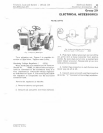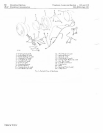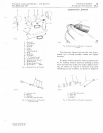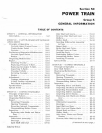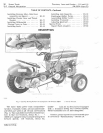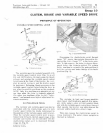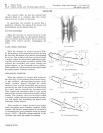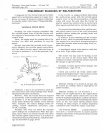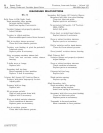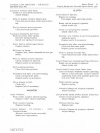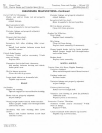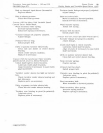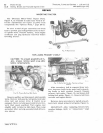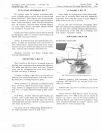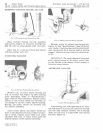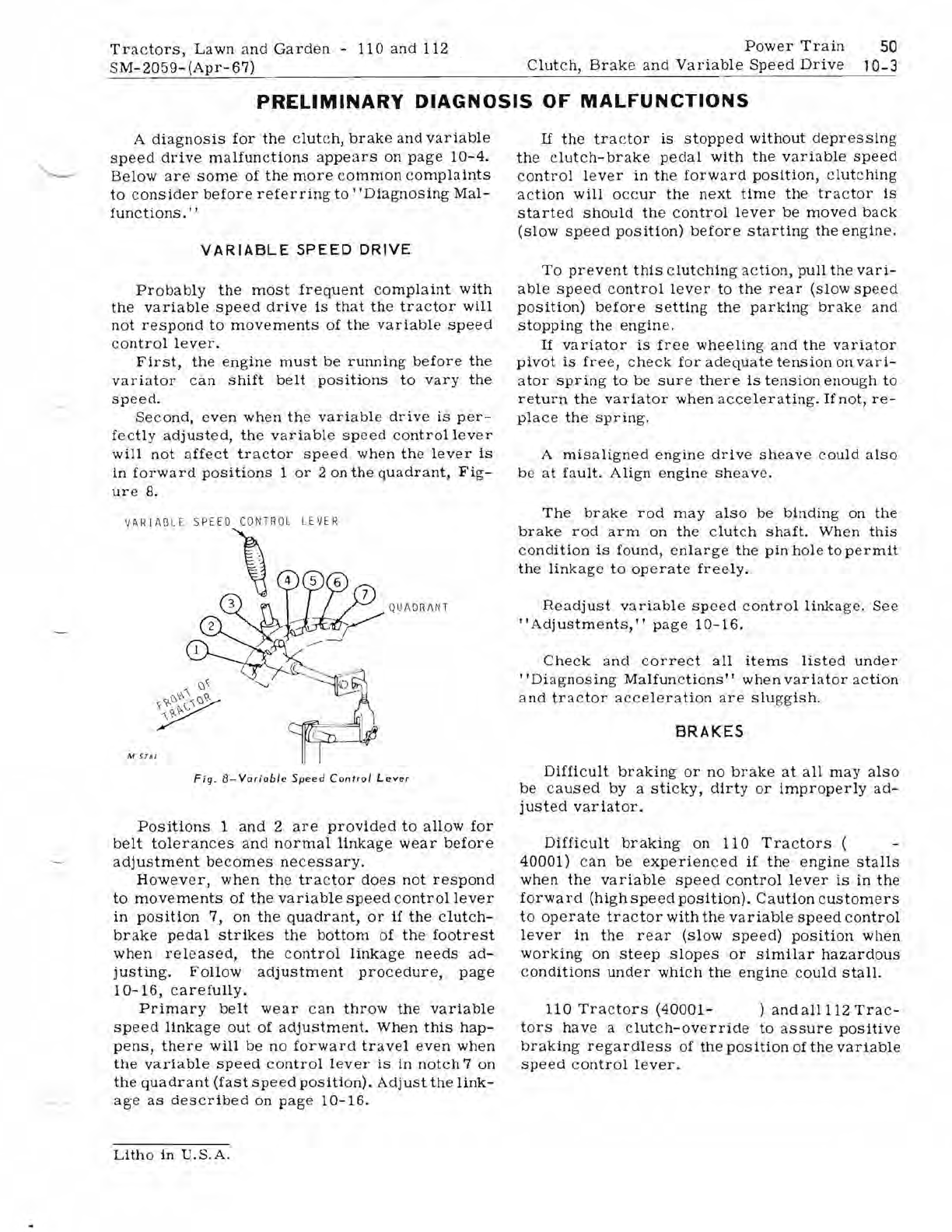
Tractors,
Lawn
and
Garden
-
110
and
112
Power
Train
50
SM-2059-(Apr-67)
Clutch,
Brake
and
Variable
Speed
Drive
10-3
PRELIMINARY
DIAGNOSIS
OF
MALFUNCTIONS
A
diagnosis
for
the
clutch,
brake
and
variable
speed
drive
malfunctions
appears
on
page
10-4.
Below
are
some
of
the
more
common
complaints
to
consider
before
referring
to
II
Diagnosing
Mal-
functions.
' ,
VARIABLE
SPEED
DRIVE
Probably
the
most
frequent
complaint
with
the
variable
speed
drive
is
that
the
tractor
will
not
respond
to
movements
of
the
variable
speed
control
lever.
First,
the
engine
must
be
running
before
the
variator
can
shift
belt
positions
to
vary
the
sp
e
ed.
Second,
even
when
the
variable
drive
is
per-
fectly
adjusted,
the
variable
speed
control
lever
will
not
affect
tractor
speed
when
the
lever
is
in
forward
positions
1
or
2
on
the
quadrant,
Fig-
ure
8.
VA
RI
AB
LE SPE
ED
CON
T
RO
L LE
VE
R
(3)'
qxpS"J
~~
Q
UADRANT
Cl'
"'-'
0
7
"."'~~
~
M
57
81
Fig
.
8-Yariable
Speed
Control
Leve,
Positions
1
and
2
are
provided
to
allow
for
belt
tolerances
and
normal
linkage
wear
before
adjustment
becomes
necessary.
However,
when
the
tractor
does
not
respond
to
movements
of
the
variable
speed
control
lever
in
position
7,
on
the
quadrant,
or
if
the
clutch-
brake
pedal
strikes
the
bottom
of
the
footrest
when
released,
the
control
linkage
needs
ad-
justing.
Follow
adjustment
procedure,
page
10-16,
carefully.
Primary
belt
wear
can
throw
the
variable
speed
linkage
out
of
adjustment.
When
this
hap-
pens,
there
will
be
no
forward
travel
even
when
the
variable
speed
control
lever
is
in
notch
7
on
the
quadrant
(fast
speed
position).
Adjust
the
link-
age
as
described
on
page
10-16.
Litho
in
U.S.A.
If
the
tra
c
tor
is
stopped
without
depr
e
ssing
the
clutch-
brake
pedal
with
the
variable
speed
control
lever
in
the
forward
position,
clutching
action
will
o
cc
ur
the
next
time
the
tra
c
tor
is
started
should
the
control
lever
be
moved
back
(slow
speed
position)
before
starting
the
engine.
To
prevent
this
clutching
action,
pull
the
vari-
able
speed
control
lever
to
the
rear
(slow
speed
position)
before
setting
the
parking
brake
and
stopping
the
engine
.
If
variator
is
free
wheeling
and
the
variator
pivot
is
free,
check
for
adequate
tension
on
vari-
ator
spring
to
be
sure
there
is
tension
enough
to
return
the
variator
when
accelerating.
If
not,
re-
place
the
spring.
A
misaligned
engine
drive
sheave
c
ould
also
be
at
fault.
Align
engine
sheave.
The
brake
rod
may
also
be
binding
on
the
brake
rod
arm
on
the
clutch
shaft.
When
this
condition
is
found,
enlarge
the
pin
hole
to
permit
the
linkage
to
operate
freely.
Readjust
variable
speed
control
linkage.
See
"Adjustments,"
page
10-16.
Check
and
correct
all
items
listed
under
"Diagnosing
Malfunctions"
when
varia
tor
action
and
tractor
acceleration
are
sluggish.
BRAKES
Difficult
braking
or
no
brake
at
all
may
also
be
caused
by a
sticky,
dirty
or
improperly
ad-
justed
variator.
Difficult
braking
on
110
Tractors
(
40001)
c
an
be
experienced
if
the
engine
stalls
when
the
variable
speed
control
lever
is
in
the
forward
(high
speed
position).
Caution
customers
to
operate
tractor
with
the
variable
speed
control
lever
in
the
rear
(Slow
speed)
position
when
working
on
steep
slopes
or
similar
hazardous
c
onditions
under
which
the
engin
e
could
stall.
110
Tractors
(40001-
)
and
a11112
Trac-
tors
have
a
clutch-override
to
assure
positive
braking
regardless
of
the
position
of
the
variable
speed
control
lever.



